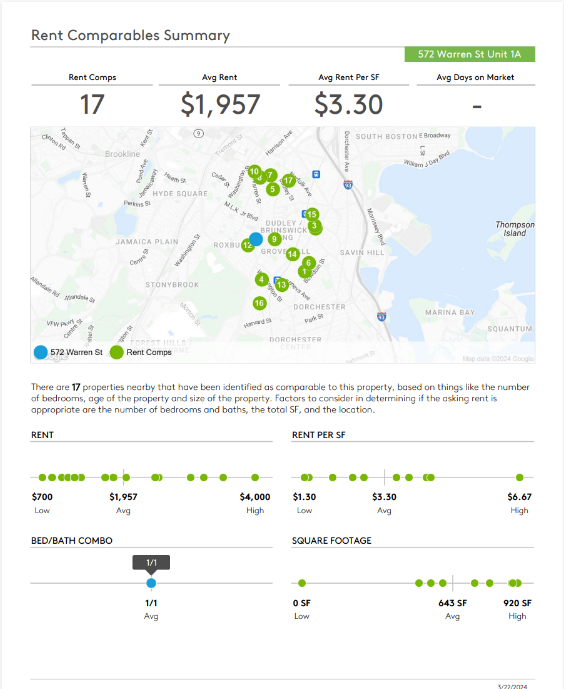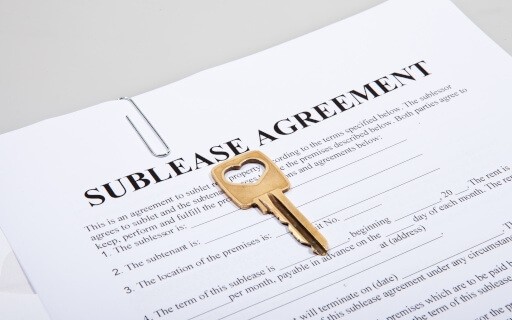Rent analysis reports are valuable tools for you as a landlord to analyze market trends, determine rent prices, and help you make informed decisions about your rental property. Let's discuss why rent analysis reports are important and how to navigate them effectively.
What Is a Rent Analysis Report?
A rent analysis report is a document that provides an overview of the current rental market in a specific area. It includes data on average rent prices, vacancy rates, and other relevant information for rental properties. This information can be used to compare and evaluate the performance of your property against others in the same location. These rent data reports are often generated by real estate companies or independent research firms and are available for purchase or subscription.
Who Uses Rent Analysis Reports?
Rent analysis reports aren't just for dictating the price of your property – property managers, real estate agents, investors, and appraisers all turn to these reports for guidance. These reports are an essential tool in the decision-making process, wielding the power to lower risks and optimize profits for your rental property. Furthermore, rent analysis reports are particularly useful for those managing multiple properties or trying to break into a new rental market.
Why Are Rent Analysis Reports Important?
Rent analysis reports are important tools for landlords because they provide valuable insights into the rental market. By analyzing this data, you can determine an optimal rent price for your rental property, understand market trends, and make strategic decisions about your rental business. Without this information, you may struggle to price your rental property competitively or make informed decisions about your investment.
Understanding Rent Analysis Reports
Rent analysis reports include a variety of data on rental rates, property trends, and occupancy rates. These reports are typically compiled by real estate research firms or generated by software programs. As a landlord, understanding the information in these reports is essential for setting competitive rent prices and maximizing profits.
What's Included in Rent Analysis Reports?
Rental analysis reports are detailed documents containing crucial data for informed rental management decisions. They typically offer in-depth insights into average rent prices in a specific area, aiding in setting competitive rents. These reports compare rental rates and amenities of similar properties in a given market, helping assess the competitiveness of your rental pricing. When listing your rental on Apartments.com, you receive complimentary rent comparison reports. These reports provide a clear market overview, enabling you to price your rental accurately, evaluate your property's value against similar ones, and understand market conditions like average days on the market and rent rates.
Below is an example of what is included in a rent comparables report from Apartments.com:

How to Navigate Rent Analysis Reports
Now that you have a better idea of what rent analysis reports are, their purpose, and the types of rent analysis reports, let's dive into some tips for navigating rent comp reports effectively:
-
Know Your Market: Make sure you understand the specific rental market you're renting out in. Components such as location, demographics, and property type can greatly impact rental prices.
-
Make Fair Comparisons: When looking at rent comps reports, make sure the properties being compared to yours are similar in terms of size, amenities, and location. This will provide a more accurate picture of the competitiveness of your rental prices.
-
Stay Up to date: Rental markets are constantly changing, so it's important to regularly review rent analysis reports and stay informed on the latest trends and data. This will help you make proactive decisions and stay ahead of the competition.
-
Consider All Factors: Don't just focus on rental prices. Take into account occupancy rates, vacancy rates, and other metrics to make well-rounded decisions about your rental property.
-
Use Multiple Reports: Don't rely on just one rent analysis report. Use multiple reports to get a more comprehensive understanding of the rental market. Different companies may collect data differently or have different areas of focus, so comparing reports can provide a more well-rounded perspective.
Rent analysis reports are powerful tools that you can use to stay informed and make data-driven decisions about your rental property. By understanding these reports and effectively navigating them, you can set competitive rent prices, optimize occupancy rates, and maximize profits.
Utilizing Rent Analysis Reports for Smart Decisions
Rent analysis reports have become essential for landlords in making strategic decisions. They help determine rent prices and provide valuable insights about the rental market. By utilizing these rent analysis reports, you can stay ahead of the competition and optimize your profits. Below are some benefits of using rent analysis reports.
Setting Competitive Rent Prices
One of the primary benefits of rent analysis reports is their ability to help you set competitive rent prices. By analyzing current and historical rental rates in a specific market, these reports can provide valuable insights into what rental price points are most attractive to potential tenants. This information can help you price your property appropriately, ensuring you are not over or undercharging for rent.
Optimizing Occupancy Rates
Rent analysis reports also provide valuable data on occupancy rates, such as the percentage of occupied rental units in a market. By monitoring this metric, you can gain an understanding of the current demand for rental properties in the area and adjust your marketing strategy accordingly. For example, if occupancy rates are high, you may want to increase the rent price or offer fewer incentives to attract potential tenants. On the other hand, if occupancy rates are low, you may need to lower rent prices or offer more attractive amenities and incentives to entice potential renters.
Identifying Market Trends
Another advantage of rent analysis reports is that they're able to reveal market trends and rental marketing opportunities. By regularly reviewing these reports, you can stay informed on changes in lease durations, as well as other important metrics that could affect your property. This knowledge allows you to make proactive decisions to ensure the success of your rental business.
Identifying Underperforming Properties
A rent analysis report can be used to identify underperforming properties that are stuck on the rental market, offering you a chance to reevaluate their value proposition and potentially improve the financial outcome. By leveraging rent analysis reports, you can determine which properties may need adjustments to stay competitive in the current market.
Lease Renewals
Rent analysis reports can help you make informed decisions about lease renewals. By understanding the market trends and rental rates in a specific area, you can negotiate new lease terms that are beneficial for both parties. This can help retain good tenants and reduce costly turnover.
Limitations of Rent Analysis Reports
While rent analysis reports can provide valuable insights into rental value, it's important to understand their limitations as well. These reports may not always reflect the specific conditions of your property, and they may not be 100% accurate. Factors such as recent renovations, unique amenities, or changes in the local market could affect the data presented in these reports. As a result, it's important to use rent analysis reports as a tool but not rely solely on this information to make decisions about your rental property. While rent analysis reports are valuable tools, they should be used in conjunction with other resources to gain a well-rounded understanding of the rental market.
Tips for Getting the Most Out of Rent Analysis Reports
To ensure you are getting the most out of rent analysis reports, here are some additional tips to consider:
-
Factor in Property Upgrades and Renovations: If you've made upgrades or renovations to your rental property, incorporate these improvements into your rent analysis. Highlighting enhanced features and amenities can justify higher rent prices and differentiate your property in the market. Additionally, track the return on investment (ROI) of any property upgrades by monitoring changes in rental income and tenant satisfaction levels.
-
Stay Flexible and Adaptive: Real estate markets are subject to rapid changes. Maintain flexibility in your rental pricing strategies and be prepared to adjust rents based on evolving market conditions, tenant feedback, and any pressure from competition. Be sure to regularly revisit and refine your rent analysis approach to ensure that it remains responsive to market dynamics and aligned with your investment objectives.
-
Consider Tenant Preferences: Consider tenant preferences and lifestyle trends when interpreting rent analysis reports. Factors such as proximity to public transportation, amenities, schools, and employment hubs can significantly influence rental demand and pricing. By aligning your property offerings with tenant preferences, you can attract and retain high-quality tenants while maximizing your rental income.
-
Utilize Historical Data: Look beyond current market conditions and examine historical data in rent analysis reports. Analyzing trends over time can reveal patterns and seasonal fluctuations in rental demand and pricing, enabling you to anticipate future market movements and make data-driven decisions accordingly. Maintain detailed records of rental income, occupancy rates, and market trends over multiple years to identify long-term trends and patterns in your local rental market.
Rent analysis reports serve as an essential tool for landlords, providing invaluable insights for making informed decisions about rental properties. They enable landlords to set competitive rent prices, optimize occupancy rates, and identify market trends that can impact business operations. An effective rental management strategy involves not just relying on these reports but incorporating them as a piece of a larger, comprehensive approach. Such an approach includes consulting with industry professionals, staying updated with rental market trends, and using a variety of other resources to ensure a well-rounded understanding of the rental market.
One notable resource to consider in enhancing this strategy is Apartments.com Rent Comparables. This tool offers a detailed comparability analysis, helping you to further refine pricing strategies and understand the competitive landscape. By leveraging Apartments.com Rent Comparables along with a broad set of rent analysis reports and other resources, you can gain a competitive edge, ensuring that your property is priced appropriately, filled with satisfied tenants, and ultimately gaining rental income.











